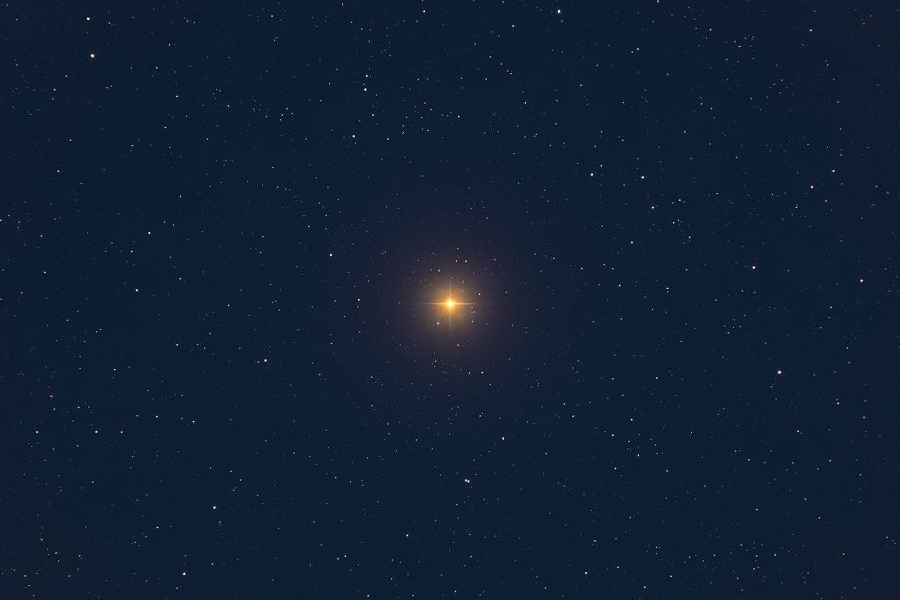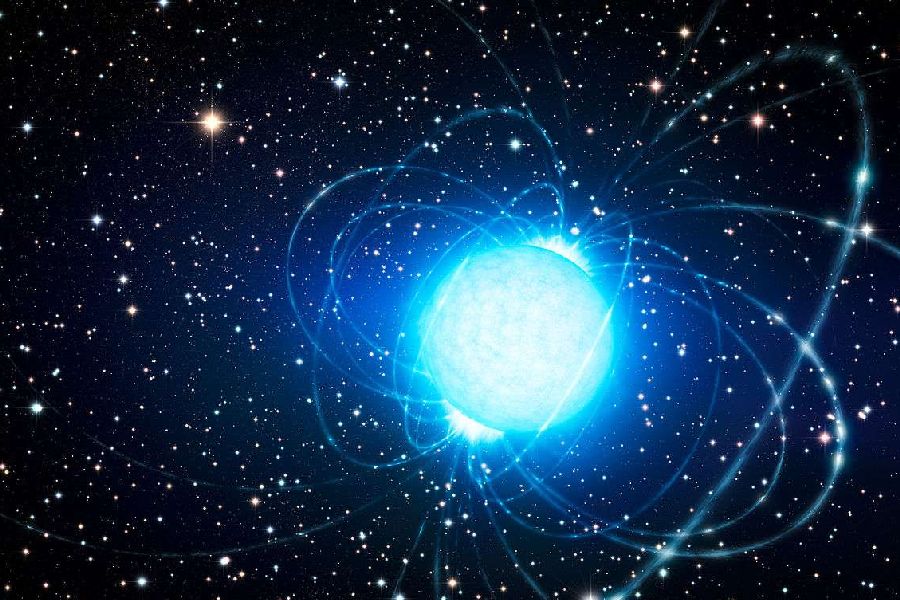Have you ever gazed up at the night sky and wondered about those twinkling dots of light? What is a star, really? The universe contains trillions of these fiery spheres – but what defines a star, and how is it different from other celestial bodies like planets and moons? How do stars form?
Whether you’re an aspiring astronomer or just casually curious about space, you’ll learn the basics of star composition, birth, evolution, and death cycles that make our universe a dynamic, changing place.
From red dwarfs to blue giants, supergiants to hypergiants, let’s take a look at how is a star created and all the different types of stars.
What Is a Star?
A star is a massive, luminous celestial body composed mostly of hydrogen and helium undergoing nuclear fusion, producing light and heat.
The gravitational force pulling inward is balanced by the outward pressure from nuclear reactions, maintaining a stable equilibrium. Stars come in various sizes, temperatures, and colors, and their life cycle depends on their mass. But what does a star look like to the naked eye? When observing stars without any prior knowledge of their formation, they look like tiny points of light. But the creation and the truth behind what is a star is far from it.
Stars are huge celestial bodies that undergo nuclear fusion in their cores, emitting light and other radiation. For an object to achieve the internal conditions needed to be considered a star, it must have sufficient mass to overcome gravity and start fusion processes.
This minimum mass is about eight percent the mass of our Sun. Under this threshold, bodies are called “brown dwarfs” – failed stars that could never ignite. The material that forms stars originates from nebulae – massive clouds of gas and space dust floating between stars.

Types of Stars: A Stellar Mosaic
Red dwarfs
The most abundant stars in the universe are red dwarfs – small, dim stars emitting a reddish glow. Despite their faintness, red dwarfs can shine for hundreds of billions of years due to their low mass and slow burn rate.
These small, cool stars quietly burn for billions of years, outlasting their more massive counterparts. Common in the universe, red dwarfs contribute to the stellar backdrop, casting a subtle glow on the cosmic canvas and embodying the quiet, persistent heartbeat of the celestial expanse.
Red giants
Red giants, stellar titans in the cosmic ballet, mark the majestic later chapters of a star’s life. Born from the metamorphosis of sun-like stars, these celestial behemoths expand in size and radiate a resplendent red glow.
As their core exhausts its nuclear fuel, outer layers drift away into space, creating intricate cosmic nebulae. Despite their grandeur, red giants signify the waning moments before a star transitions into a white dwarf, leaving behind a celestial legacy that echoes across the vastness of the universe.
Blue giants
Blue giants, celestial firebrands in the stellar tapestry, command attention with their intense brilliance and scorching temperatures. These massive stars, much hotter than our sun, radiate a striking blue hue, illuminating the cosmic stage.
Short-lived but spectacular, blue giants play a pivotal role in shaping galaxies, influencing the composition of interstellar matter, and leaving a dazzling imprint on the vast canvas of the universe.
White dwarfs
White dwarfs, the remnants of sun-like stars, embody the twilight of stellar existence. These compact, Earth-sized remnants glow faintly, marking the end of a star’s evolutionary journey.
Once stellar powerhouses, they now slowly cool over eons, their brilliance dimming as they transition from cosmic performers to serene observers of the ever-changing universe.
White dwarfs, though unassuming, encapsulate the profound transformation that stars undergo, leaving behind a legacy as the final act in the cosmic drama of their existence.
Neutron Stars
Neutron stars, born from the fiery remnants of massive stellar explosions, epitomize extremes in the cosmic realm. These city-sized stellar remnants pack the mass of our sun into a dense sphere, generating gravitational forces so intense that they warp space-time.
Neutron stars exhibit powerful magnetic fields, emitting beams of radiation observable as pulsar Stars. Neutron stars stand as celestial enigmas, captivating symbols of the universe’s boundless wonders.
Categories
Massive Stars and Formation of Massive Stars
Massive stars, also called hypergiants, are enormously large, hot, bright stars with at least eight times the mass of our sun. The most massive and luminous stars known are over 100 solar masses and hundreds of thousands of times brighter than the sun.
Despite their rarity among stars, massive stars have an outsized impact on their surroundings. These stellar behemoths take shape within unusually large clouds of cold molecules like hydrogen and carbon monoxide gas floating between stars.
The formation process of massive stars
Weighing up to millions of times the mass of our Sun, these giant molecular clouds begin to fracture under their own gravity. Portions undergo gravitational collapse as matter accelerates inward, snowballing into an embryonic protostar.
If enough material accumulates through this accretion process – at least eight solar masses – nuclear fusion ignites, and a new massive star comes blazing into existence.
Impact and significance of massive stars
Though representing a tiny fraction of stars, these rapidly burning mega-stars dominate newer regions of galaxies and are visible across greater cosmic distances as some of the most luminous objects known. Their radiation shapes interstellar gas clouds and influences future star formation processes.
Characteristics of Massive Stars
High mass
Massive stars are defined by their substantial mass, typically several times greater than that of our sun. This abundance of mass sets the stage for intense gravitational forces and nuclear reactions inside the star.
Luminosity
Due to their enormous size and higher temperatures, massive stars exhibit extreme luminosity. They can shine millions of times more brightly than the Sun, illuminating their surrounding cosmic neighborhoods.
Temperature
Massive stars are hot, with surface temperatures often exceeding 30,000 K. This high temperature is a result of the intense gravitational compression and fusion reactions occurring in their cores.
Short lifespan
Paradoxically, the massive stars burn through their fuel at a rapid pace due to the higher temperatures and greater pressure in their cores. Consequently, their lifespan is significantly shorter compared to smaller stars.

Neutron Stars and Formation of Neutron Stars
When a massive star with over eight solar masses exhausts its nuclear fuel, it can no longer produce the heat and pressure needed to support its own weight against gravity. The star’s core rapidly collapses, triggering a titanic supernova explosion that blasts away its outer layers.
The remaining central portion implodes with tremendous force, crushing atoms together and stripping away electrons.
This extraordinary compression creates a super-dense neutron star, so named because its matter is packed with tiny particles called neutrons, closely bundled as if it were all one giant atomic nucleus.
A typical neutron star may contain about 1.4 solar masses of material compressed down into a city-sized sphere only 12 miles across. This incredible density makes a single teaspoon of neutron star material weigh over a billion tons on Earth.
The processes behind such radical collapse into neutron stars have remained shrouded in mystery since their discovery as pulsing radio beacons, though theories abound regarding the quantum mechanics at play in the cores of these bizarre celestial objects.
Unlocking the physics underlying neutron stars promises to reveal secrets about the nature of matter under extremes of density and gravity rarely seen.
Characteristics of Neutron Stars
Compact density
Neutron stars are the epitome of cosmic compression. Despite having a mass several times that of our sun, they squeeze that mass into a space roughly the size of a city, typically around 10 km (6 m) in diameter.
This extreme density is a testament to the powerful gravitational forces at play during their formation.
Rapid rotation
Neutron stars often spin at mind-blowing speeds. This rapid rotation is a consequence of the conservation of angular momentum during the collapse of the star’s core. Some neutron stars can complete hundreds of rotations per second, creating a cosmic whirlwind that challenges our understanding of stellar dynamics.
Intense magnetic fields
Neutron stars boast magnetic fields that defy imagination. These fields are millions to billions of times stronger than Earth’s magnetic field.
The intense magnetism is a remnant from the original star’s magnetic field, which becomes greatly amplified during the collapse. Such powerful magnetic fields influence the behavior of matter and radiation in their vicinity.
Pulsar phenomenon
Neutron stars often showcase a mesmerizing display known as pulsars. Imagine a cosmic lighthouse– as the neutron star rotates, beams of radiation emanating from its magnetic poles.
When these beams sweep across our line of sight, we observe periodic pulses of radiation. Pulsars are essentially celestial metronomes, ticking away with remarkable regularity.
Emission across the spectrum
Neutron stars are radiant across the electromagnetic spectrum. They emit radiation that spans from radio waves to X-rays.
The diverse range of emitted radiation allows astronomers to study these objects using various observational techniques, uncovering the secrets hidden within their extreme environments.
Life Cycle of Neutron Stars
Neutron stars are the longest-lived remnants of stars, capable of persisting for billions of years while slowly radiating their residual heat.
Having shed most of its original star’s mass, a neutron star can spin at incredible speeds, making a full rotation multiple times per second as particles stream along intense magnetic field lines.
Through a process not fully grasped, about 1 out of 10 neutron stars have an even more intense magnetic field. These are called magnetars, possessing magnetic fields quadrillions of times stronger than Earth’s – so powerful they could wipe credit cards from a thousand kilometers away! Now that you know what is a star, and what are neutron stars– one of the oldest lived remnants of stars, you’ll no longer look at the sky with the same pair of eyes as you do now.
Conclusion
So, what can we conclude? What is a star? Stars are fiery spheres of gas that generate light and heat through the process of nuclear fusion at their cores. Born out of cosmic clouds of gas and dust, stars go through various stages of life and death depending on their mass and fusion rate.
From dim red dwarfs to blistering blue giants to explosively brilliant supernovae, we have covered the characteristics that define stars scientifically. We have also explored the forces that allow diverse types of stars to form, shine, and evolve over eons.
